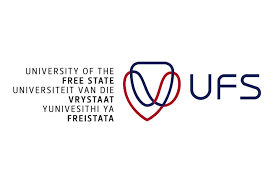University of the Free State: UFS busy with exciting research into flavours and fragrances
Flavours and fragrances have a wide application in the food, feed, cosmetic, chemical and pharmaceutical sectors. Many flavour compounds are still produced via chemical synthesis or via extraction from plant or animal sources. However, there is increasing interest in their bio-production or the use of flavour compounds of (micro) biological origin.
One reason for this shift is that chemical synthesis often uses environmentally unfriendly processes. Chemical synthesis usually also produces racemic mixtures with the second enantiomer, mirror image of the looked-for compound, often having undesirable organoleptic properties. Furthermore, the consumer has developed a “chemophobia”-attitude towards synthetic chemical compounds, especially when related to food and home-care products. This applies even to nature-identical compounds – products that occur in nature but are produced via a non-natural chemical process. Products produced with the use of enzymes or microbes from “natural” substrates can be labelled “natural”. The flavour and fragrance industry thus pay higher prices for such products labelled as “natural”.
The invention
A University of the Free State (UFS) team, led by Prof Martie Smit and Prof Dirk Opperman in the Department of Microbiology and Biochemistry are conducting exciting research in this area. They filed a patent entitled “Process for the chemical modification of alkanes, fatty acids and fatty alcohols”.
The invention relates to a process for the enzymatic in-chain hydroxylation of C12 to C16 fatty acids, alcohols, and alkanes. Hydroxylation of C12 fatty acid and alcohol provides routes for the synthesis of “natural” δ-dodecalactone. The advantage of these routes is that they do not rely on massoia lactones. Massoia lactones are derived from the bark of Massoia trees which grow in Indonesia. Harvesting of the bark kills the trees.
The cytochrome P450 enzymes (P450s) claimed in this patent are to the inventors’ knowledge the most regioselective enzymes described thus far that can be used for the synthesis of δ-dodecalactone from lauric acid or 1-dodecanol. The approach that the technology takes is to claim cytochrome P450 enzymes that share 70 % amino acid identity to a set of selected P450s for the regioselective hydroxylation of lauric acid and 1-dodecanol to synthesise δ-dodecalactone.
Still in early stage
The current state of development is early stage with the technology only demonstrated in the laboratory on a small scale (100-200 ml). Before the technology can be commercialised the team would need to further improve the regioselectivity and stability of the P450s and proof that the reactions can be scaled up in bioreactors. The technology will probably be delivered as an enzyme (amino acid sequence) with the desired properties.
There are other research groups working on a synthetic biology approach for the de novo synthesis of δ-dodecalactone from glucose by genetically engineered microbes. It is still unclear how such a process will compare in terms of product yields, economics and environmental impact with the processes proposed by the UFS patent.
If the team had to partner with a commercial company, their first choice would be to work with an established flavour and fragrance company. Another possibility would be the small French flavour and fragrance company that Dr Alizé Pennec, the post-doc and co-inventor who initially discovered the unique P450 activity, is working for.
Please view the videos for more information on patents.
The Vice-Rector: Research and Internationalisation has released two new calls for applications for funding. Academic staff and researchers are encouraged to submit applications for these funds. At this stage we are not accepting projects from Research Fellows.
The two funds are:
1. The Industrial Engagement Fund
2. The Intellectual Property Commercialisation Fund
Each fund has its own guidelines and application process. The guidelines are attached. The applications must be filled in on RIMS.

